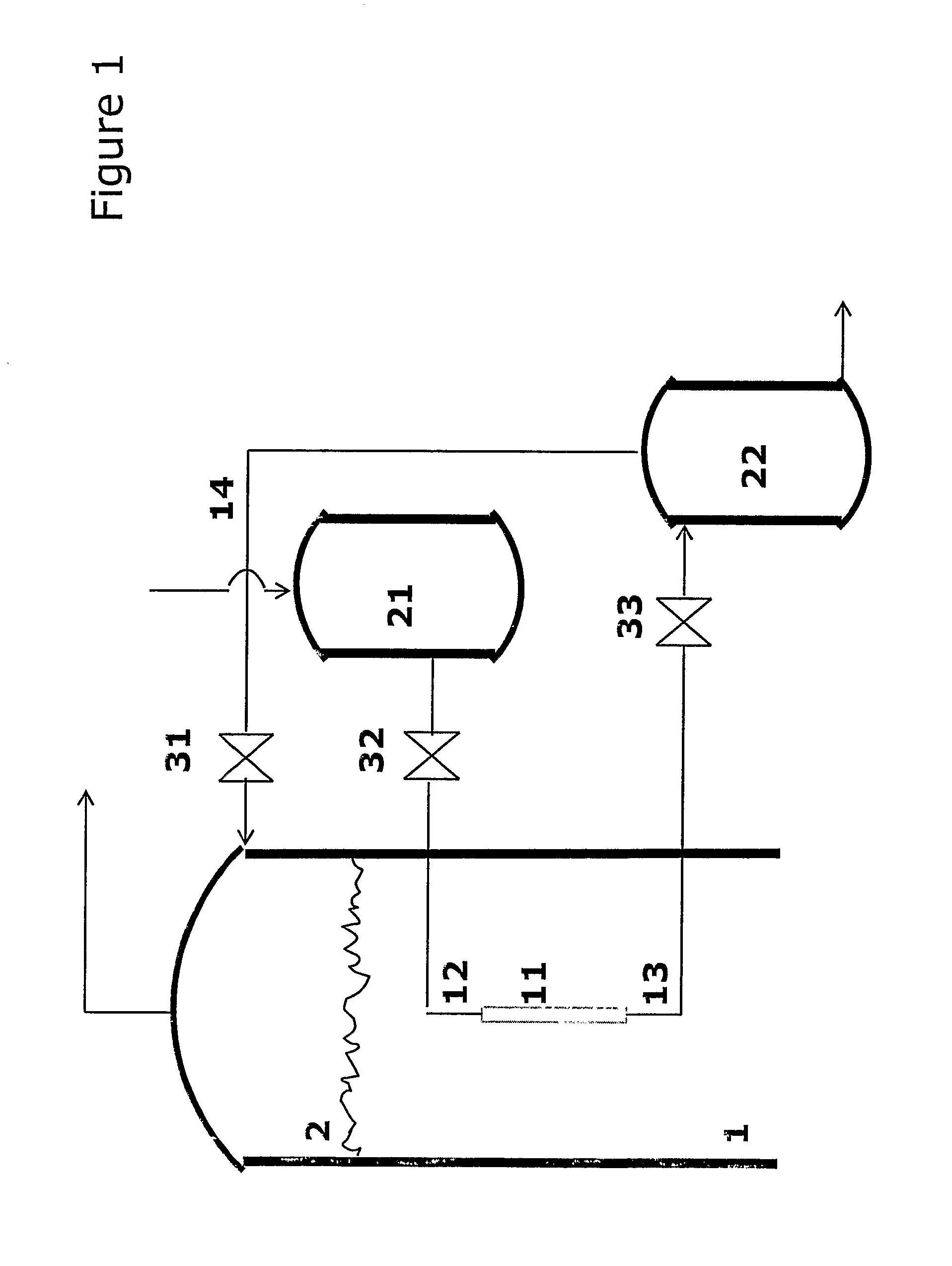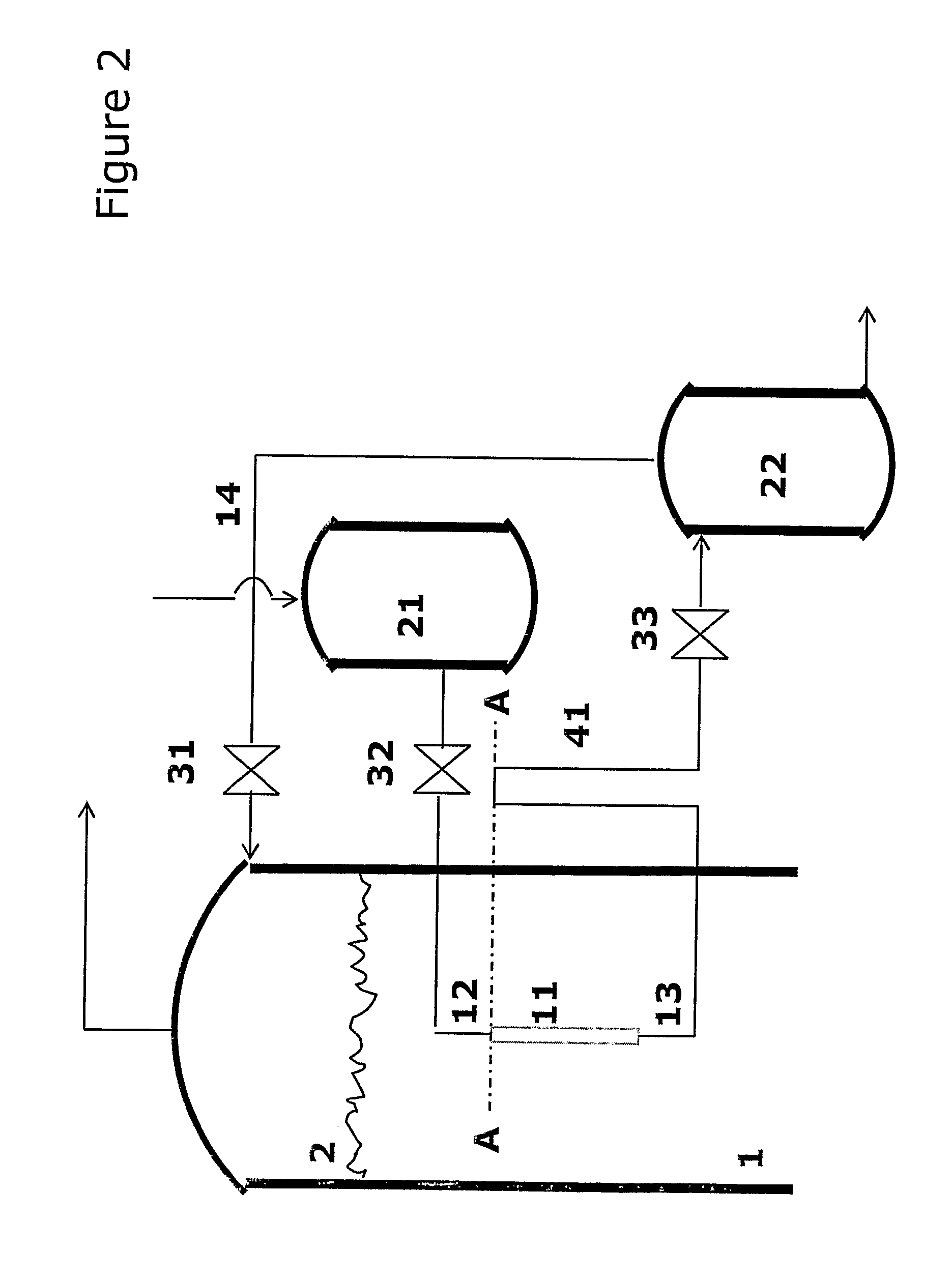Filtration method and installation
a technology of liquid separation and installation method, which is applied in the direction of filtration separation, moving filter element filter, separation process, etc., can solve the problems of catalyst attrition, catalyst attrition, and filtration rate may drop below acceptable levels, and research has focused on attrition resistant ltft catalysts, but without much success
- Summary
- Abstract
- Description
- Claims
- Application Information
AI Technical Summary
Benefits of technology
Problems solved by technology
Method used
Image
Examples
example 1
[0092]In this first example a LTFT three phase slurry reactor with 2.7 m inner diameter and a height of 28 m, and with a filtration method according to the present invention installed in an embodiment as illustrated in FIG. 5 was used.
[0093]The installation included a plurality of hollow filter elements closed in both ends, immersed in a vertical orientation in the slurry. The filter elements were located in filter element groups. The filter media of the filter elements was manufactured from stainless steel woven wire mesh having an average pore size of 70 μm. The concentration of catalyst particles in the slurry in this experiment was 8 weight %, with a particle size distribution as given below:
[0094]<100 μm 95 vol %
[0095]<70 μm 50 vol %
[0096]<25 μm 10 vol %
[0097]<5 μm 3 vol %
[0098]The pressure of the LTFT slurry reactor was 1600 kPag.
[0099]During the filtration step a filtering pressure differential of 0.01-100 kPa across the filter elements and the filter cakes built up on the ou...
example 2
[0102]In this example a LTFT three phase slurry reactor, with 55 mm inner diameter and a height of 5 m and with a filtration method according to the present invention installed in an embodiment as illustrated in FIG. 9 was used. The installation included one single hollow filter element closed in both ends, immersed in a vertical orientation in the slurry. The filter media of the filter element was manufactured from stainless steel woven wire mesh having an average pore size of 70 μm. The concentration of catalyst particles in the slurry in this experiment was 12 weight %, with a particle size distribution as given below:
[0103]<100 μm 95 vol %
[0104]<70 μm 50 vol %
[0105]<25 μm 10 vol %
[0106]<5 μm 3 vol %
[0107]The pressure of the LTFT slurry reactor was 2000 kPag.
[0108]During the filtration step a filtering pressure differential of 0.01-30 kPa across the filter element and the filter cake built up on the outside of the filter element was applied to obtain and withdraw a filtrate from ...
PUM
| Property | Measurement | Unit |
|---|---|---|
| Temperature | aaaaa | aaaaa |
| Pressure | aaaaa | aaaaa |
| Flow rate | aaaaa | aaaaa |
Abstract
Description
Claims
Application Information
 Login to View More
Login to View More - R&D
- Intellectual Property
- Life Sciences
- Materials
- Tech Scout
- Unparalleled Data Quality
- Higher Quality Content
- 60% Fewer Hallucinations
Browse by: Latest US Patents, China's latest patents, Technical Efficacy Thesaurus, Application Domain, Technology Topic, Popular Technical Reports.
© 2025 PatSnap. All rights reserved.Legal|Privacy policy|Modern Slavery Act Transparency Statement|Sitemap|About US| Contact US: help@patsnap.com



